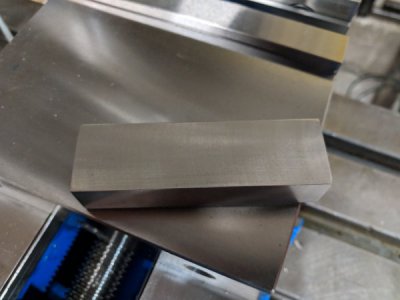Since @mikey summoned me....
My HSS flycutter grind is really just a LH square tool with 15 degree angles. I did about 1/32" nose radius, just a little to help smooth the cut. It chews up aluminum, but has to go pretty slow in steel. If you have a power feed it's not so bad. Just let it do its thing. It does leave a really nice surface finish though. If I do a lot of steel, I would like to get a decent carbide tool just for the higher RPM for faster stock removal.
Here's a steel block I used the flycutter on.

My HSS flycutter grind is really just a LH square tool with 15 degree angles. I did about 1/32" nose radius, just a little to help smooth the cut. It chews up aluminum, but has to go pretty slow in steel. If you have a power feed it's not so bad. Just let it do its thing. It does leave a really nice surface finish though. If I do a lot of steel, I would like to get a decent carbide tool just for the higher RPM for faster stock removal.
Here's a steel block I used the flycutter on.

